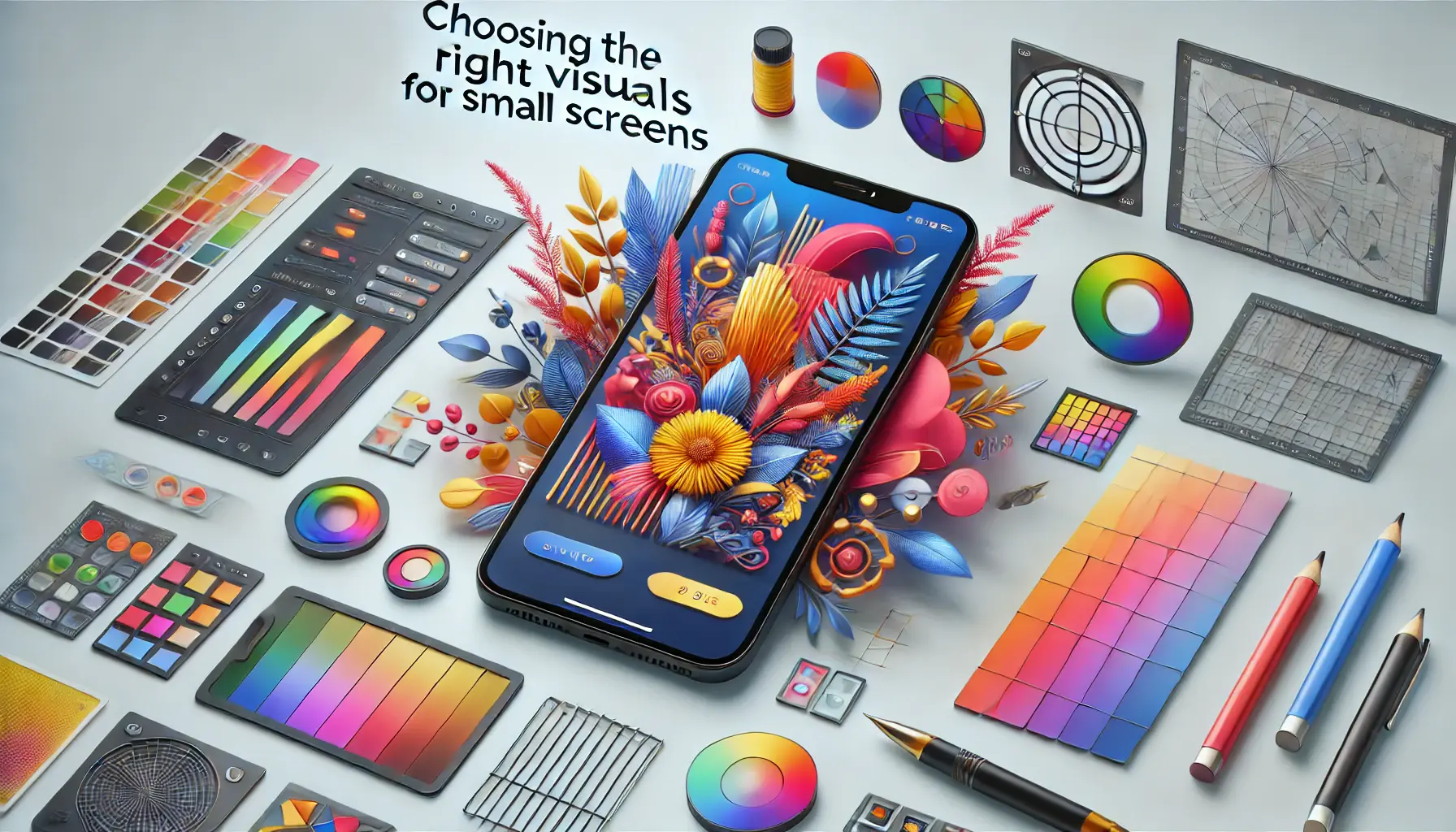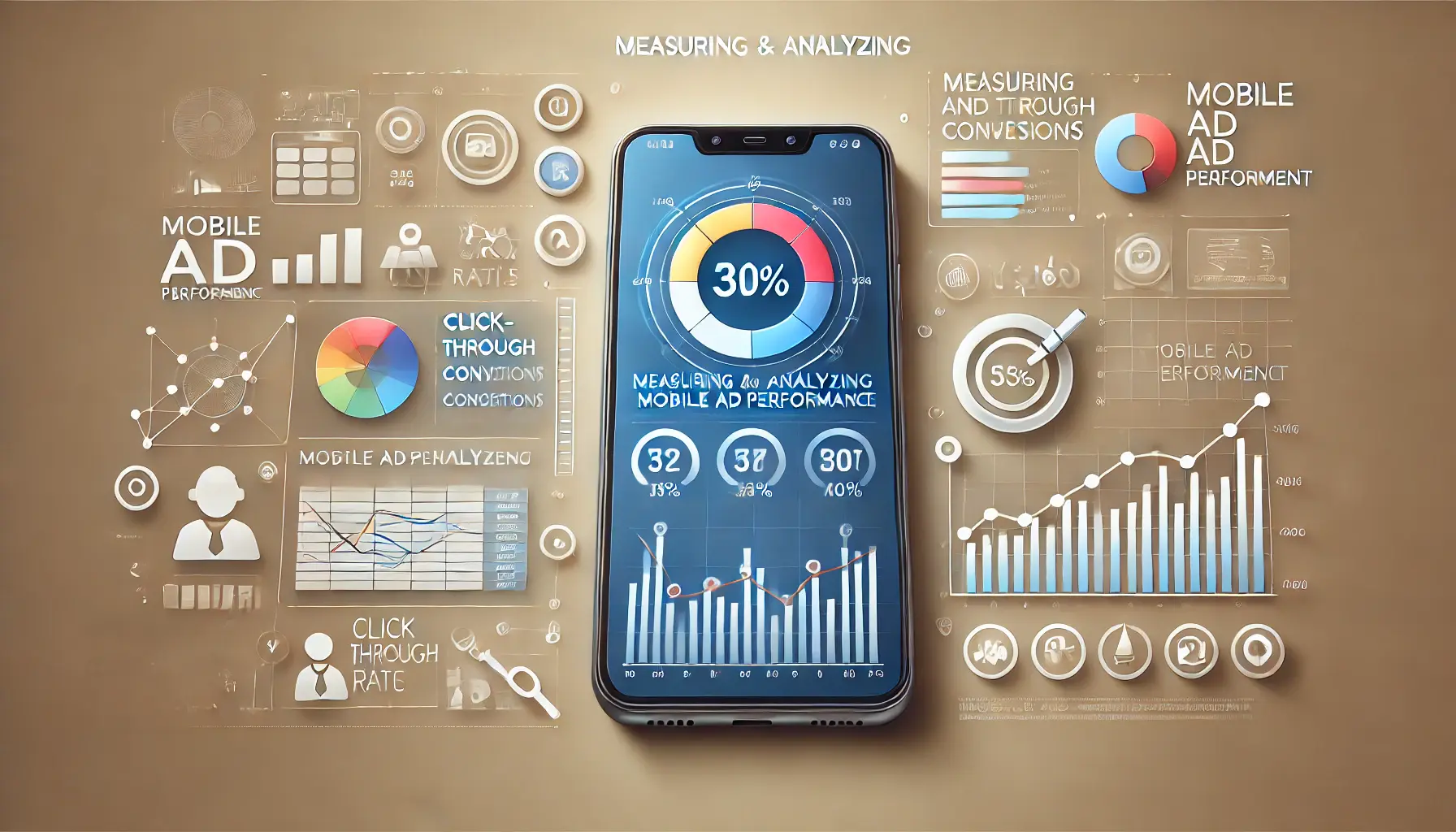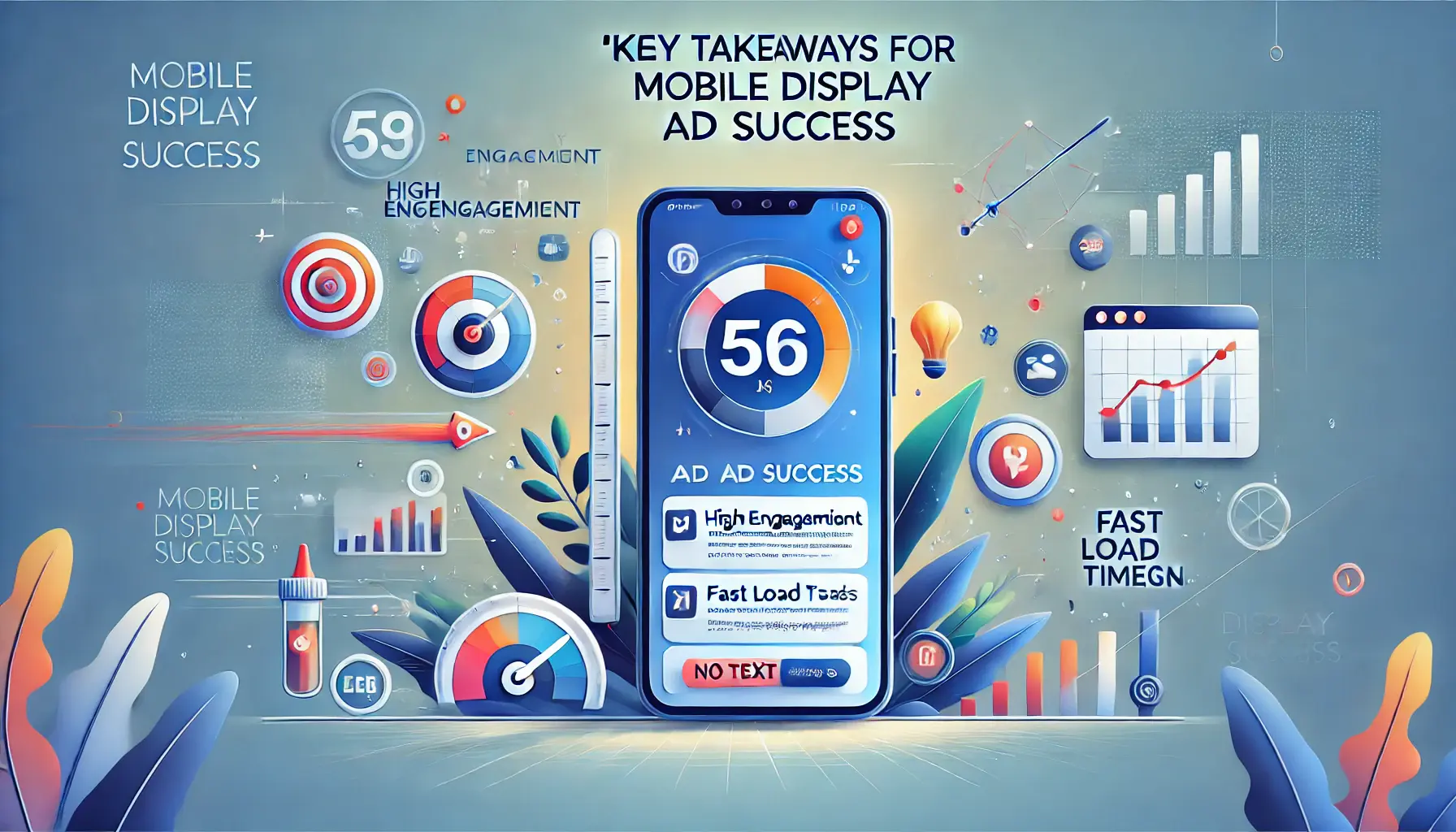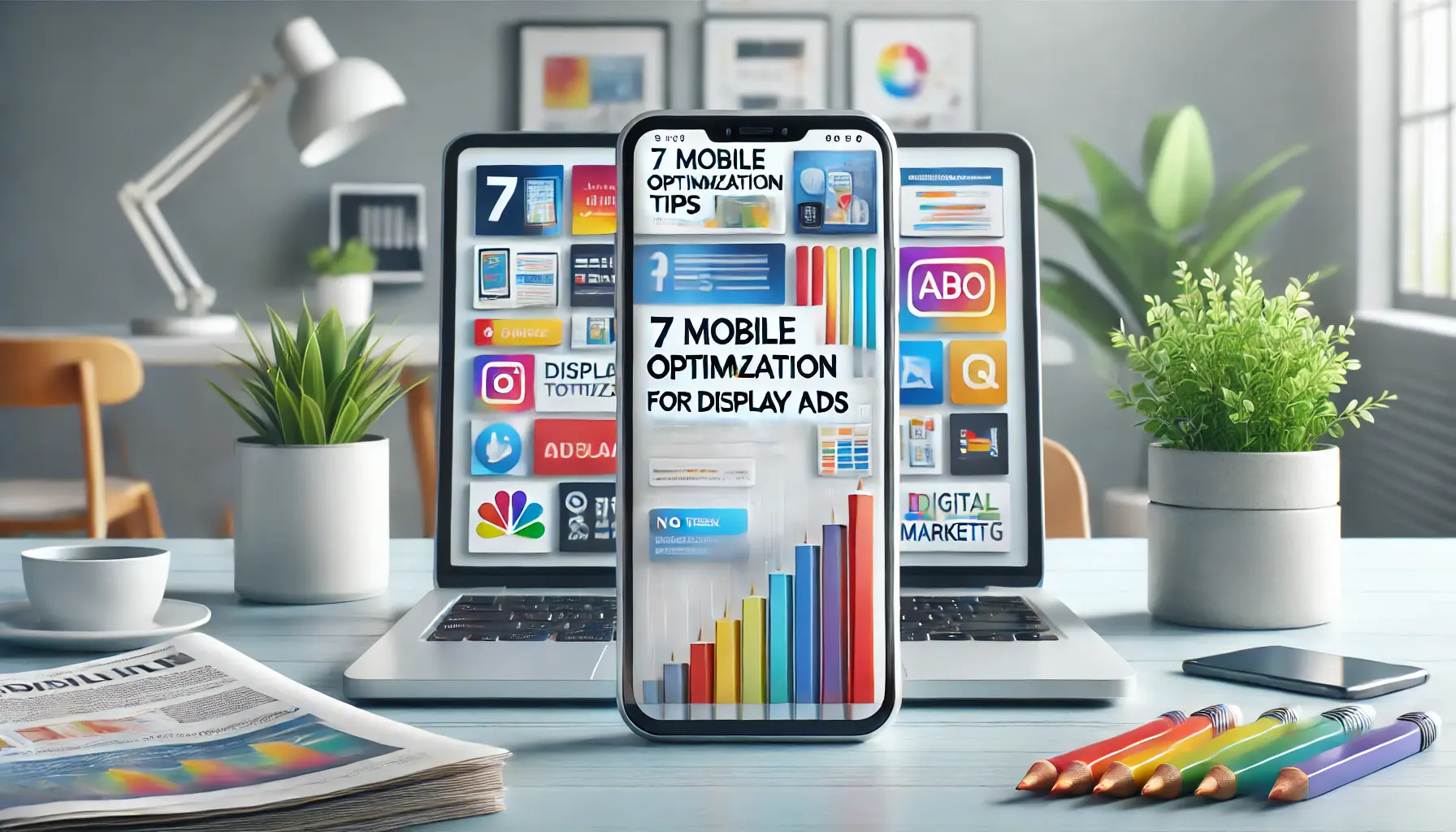In today’s modern, fast-paced digital environment, mobile devices have become a major gateway for users who want to access the Internet.
That fact has changed not only how businesses advertise but also how they optimize for being online.
Speaking of display ads, having them designed and optimized on mobile is no longer an option but an obligation.
If you want your ads to stand out, engage your audience, and drive conversions, you need to prioritize mobile optimization.
Let’s dive into some essential tips to help you create compelling and effective display ads tailored for mobile users.
- Why Mobile Optimization Matters for Display Ads
- Creating Mobile-Friendly Ad Designs
- Optimizing Display Ad Load Times on Mobile
- Implementing Effective Mobile Ad Targeting Strategies
- Measuring and Analyzing Mobile Ad Performance
- How to Master Mobile Optimization for Display Ads
- Frequently Asked Questions about Mobile Optimization for Display Ads
Why Mobile Optimization Matters for Display Ads
Mobile optimization is not just a trend; it’s the foundation of successful digital marketing in a mobile-firstA design approach that prioritizes the mobile version of a website or app over desktop. world.
With users increasingly relying on their smartphones and tablets for browsing, shopping, and entertainment, businesses must adapt their strategies to cater to this behavior.
Ignoring mobile optimization can significantly hinder the effectiveness of your display ads, leading to missed opportunities and wasted budgets.

Section Image: Exploring the shift to mobile-first advertising with a focus on digital engagement.
Understanding the Shift to Mobile-First Advertising
The shift towards mobile-first advertising is driven by the rapid adoption of mobile devices worldwide.
It has been confirmed through various studies that the majority, over 60%, of web traffic is taken by mobile devices, with the count increasing day by day.
People are ever on the move to search, compare products, and even make purchases using their phones.
This behavioral shift means that your display ads need to be tailored for smaller screens, faster load times, and touch-based interactions.

Section Image: Highlighting the benefits of mobile optimization on ad performance with visual metrics and engagement.
The Impact of Mobile Optimization on Ad Performance
Mobile-optimized ads perform better in terms of engagement, click-through rates, and conversions.
When your ads are designed for mobile, they are more likely to capture the attention of users who are scrolling through their devices.
A mobile-friendly ad not only looks visually appealing but also delivers a seamless user experience, encouraging users to interact and take action.
Without proper optimization, your ads risk being ignored or frustrating potential customers.

Section Image: Visualizing key statistics on mobile ad engagement through dynamic graphs and user interaction elements.
Statistics on Mobile Ad Engagement
To understand the importance of mobile optimization, consider these statistics: Mobile users are 2.5 times more likely to click on ads that are designed for their devices.
Furthermore, businesses that prioritize mobile optimization see a 20% increase in ad engagement compared to those that do not.
These numbers highlight the potential for growth and success when you focus on creating mobile-friendly display ads.

Section Image: Highlighting the negative impact of neglecting mobile optimization on ROI with visuals of declining metrics.
Why Neglecting Mobile Can Hurt Your ROI
Failing to optimize your display ads for mobile can have serious consequences for your return on investment (ROI).
Non-mobile-friendly ads tend to have a high bounce rateThe percentage of visitors who leave a site after viewing only one page., poor engagement, and low conversion rate.
Your marketing dollars are not well utilized that way, since you are losing potential customers in the process.
Investing in mobile optimization means a guarantee that your ads perform at maximum capacity to deliver value on every dollar spent.
Mobile optimization is critical for digital success, ensuring your ads engage effectively in a mobile-first world.

Section Image: Showcasing the process of creating responsive and visually compelling mobile-friendly ad designs.
Creating Mobile-Friendly Ad Designs
Designing ads for mobile devices requires a strategic approach to ensure they are engaging, effective, and user-friendly.
By focusing on key design principles, you can create ads that not only capture attention but also drive user interaction and conversions.

Section Image: Demonstrating the significance of responsive design with ads that adjust seamlessly across devices.
The Importance of Responsive Design for Ads
Responsive design ensures that your ads adapt seamlessly to various screen sizes and orientations.
This flexibility is important because it provides a consistent user experience across devices.
Applying responsive design to your ads can have the following effects:
- Increased user engagement: Ads that look good on any screen hold users’ attention more effectively.
- Increased click-through rate (CTR): A nicely displayed ad encourages users to take action.
- Better brand perception: Professional and adaptive ads enhance your brand’s image.

Section Image: Showcasing the importance of clear and concise text in mobile ads through a simple and engaging design.
Writing Clear and Concise Text for Mobile Ads
Considering the limited screen size of mobile phones, being clear and to the point with text in your ad is crucial.
Here are some tips to achieve this:
- Prioritize key messages: Focus on the most important information you want to convey.
- Use simple language: Avoid jargon and complex sentences to ensure readability.
- Limit character count: Keep text short to prevent clutter and maintain user interest.

Section Image: Demonstrating the process of selecting high-quality visuals optimized for small screens in mobile ads.
Choosing the Right Visuals for Small Screens
Visual elements play a significant role in mobile ads.
Selecting the right visuals can make your ad more appealing and effective:
- High-quality images: Use clear and crisp images that look good on all screen sizes.
- Relevant graphics: Ensure visuals are directly related to your product or message.
- Minimalistic design: Avoid overcrowding the ad with too many elements; simplicity is key.

Section Image: Highlighting the importance of large and engaging call-to-action buttons in mobile ad design.
Optimizing Call-to-Action Buttons for Mobile Users
A compelling call-to-action (CTA) is vital for driving user interaction.
To optimize CTAs for mobile users:
- Make buttons tappable: Design buttons large enough for easy tapping, considering touch screen interactions.
- Use contrasting colors: Ensure the colors chosen for CTA buttons make them prominent against the background, grabbing attention.
- Clear action words: Use concise, actionable text like ‘Shop Now’ or ‘Learn More’ to drive spontaneous user responses.
Responsive design and minimalistic visuals are essential for creating engaging, user-friendly mobile ads.

Section Image: Emphasizing the importance of quick load times for mobile display ads through dynamic visuals.
Optimizing Display Ad Load Times on Mobile
In this fast-paced mobile environment, ensuring that your display ads load quickly is very important.
Slow-loading ads frustrate users, leading to higher bounce rates and reduced engagement.
By implementing effective strategies, you can enhance ad load times, providing a seamless experience for mobile users.

Section Image: Depicting the negative impact of slow load times on mobile ad performance and user engagement.
How Slow Load Times Affect Mobile Ad Performance
Delayed ad load times can significantly impact user experience and ad effectiveness.
When ads load slowly:
- Increased bounce rates: Users may leave the site before the ad fully loads, reducing potential engagement.
- Decreased viewability: Ads that appear too late may be missed as users scroll past them.
- Lower click-through rates (CTR): Users are less likely to interact with ads that disrupt their browsing experience.

Section Image: Highlighting methods to optimize ad size while maintaining quality through effective tools.
Techniques to Reduce Ad Size Without Losing Quality
Optimizing ad file sizes is essential for faster load times.
Consider the following techniques:
- Image compression: Use tools to compress images, reducing file size while maintaining visual quality.
- Minimize HTTP requests: Combine multiple ad resources into a single file to decrease the number of requests.
- Limit the use of heavy scripts: Avoid unnecessary scripts that can slow down ad loading.

Section Image: Showcasing the use of lightweight ad formats for faster loading and efficient mobile display.
Using Lightweight Formats for Mobile Ads
Choosing efficient ad formats can enhance load times:
- Responsive ad designs: Ensure ads adapt to various screen sizes without requiring multiple versions.
- Native ad formats: These blend seamlessly with content and are optimized for mobile devices.
- Asynchronous loading: Load ads independently of page content to prevent delays.

Section Image: Highlighting the process of testing ad load times on various mobile devices for optimized performance.
Testing Ad Load Times on Various Mobile Devices
Regular testing across different devices ensures optimal performance:
- Use emulators and real devices: Test ads on various platforms to identify performance issues.
- Monitor key metrics: Track load times, engagement rates, and user interactions to assess effectiveness.
- Implement lazy loading: Load ads only when they enter the user’s viewport to improve perceived performance.
By focusing on these optimization strategies, you can enhance your mobile display ads’ performance, leading to improved user engagement and higher conversion rates.
Slow ad load times can drastically reduce engagement; prioritize lightweight formats and image compression to boost performance.

Section Image: Demonstrating the precision of effective mobile ad targeting strategies with audience-focused elements.
Implementing Effective Mobile Ad Targeting Strategies
To maximize the impact of your mobile display ads, it’s essential to implement precise targeting strategies that reach your desired audience.
By focusing on specific user characteristics and behaviors, you can enhance engagement and drive conversions.

Section Image: Visualizing the precision of demographic targeting strategies in mobile advertising.
Demographic Targeting
Demographic targeting involves tailoring your ads based on characteristics such as age, gender, income, and education level.
This approach ensures your message resonates with the appropriate audience segment, increasing the likelihood of engagement.

Section Image: Showcasing the effectiveness of behavioral targeting in creating personalized mobile ads.
Behavioral Targeting
Behavioral targeting utilizes data on users’ past behaviors, including browsing history, purchase patterns, and app usage, to deliver relevant ads.
By understanding user behavior, you can present ads that align with their interests and needs, enhancing effectiveness.

Section Image: Highlighting the precision of contextual targeting by integrating ads with relevant content.
Contextual Targeting
Contextual targeting places your ads within relevant content environments.
For example, displaying sports equipment ads on a fitness website ensures alignment between the ad content and the user’s current interests, increasing engagement potential.

Section Image: Demonstrating the precision of geo-targeting with location-based advertising on mobile devices.
Geo-Targeting
Geo-targeting delivers ads to users based on their geographic location.
This strategy is particularly effective for promoting local businesses or events, ensuring that your ads reach users in specific areas who are more likely to take action.

Section Image: Highlighting the role of customer personas in creating targeted and personalized mobile ads.
Utilizing Customer Personas
Developing detailed customer personas helps in understanding your target audience’s preferences, behaviors, and needs.
By creating ads targeting such personas, you can increase relevance and engagement.
By applying these mobile ad targeting strategies, you can effectively connect with your audience, delivering the proper message and maximizing the success of your mobile display advertising campaigns.
Precise targeting ensures ads resonate with your audience, improving engagement and conversion rates.

Section Image: Emphasizing the importance of measuring and analyzing mobile ad performance with detailed metrics and tools.
Measuring and Analyzing Mobile Ad Performance
To ensure the success of your mobile display advertising campaigns, it’s crucial to measure and analyze their performance regularly.
By monitoring key metrics, you can gain insights into what’s working and identify areas for improvement, ultimately enhancing your return on investment (ROI).

Section Image: Highlighting essential metrics to monitor for effective mobile ad performance analysis.
Key Metrics to Monitor
Tracking the right metrics provides a clear picture of your ad performance.
Focus on the following:
- Click-Through Rate (CTR): Measures the percentage of users who click on your ad after viewing it, indicating its effectiveness in capturing attention.
- Conversion Rate: Represents the percentage of users who take a desired action after clicking your ad, such as making a purchase or signing up for a newsletter.
- Cost Per Click (CPC): Calculates the average amount spent for each click, helping assess the cost-effectiveness of your campaign.
- Return on Ad Spend (ROAS): Evaluates the revenue generated for every dollar spent on advertising, indicating overall campaign profitability.
- Viewability Rate: Tracks the percentage of ads that are actually seen by users, ensuring your ads are placed in optimal positions.

Section Image: Showcasing the role of analytics tools in tracking and optimizing digital marketing performance.
Utilizing Analytics Tools
Employing robust analytics tools can streamline the monitoring process:
- Google Analytics 4 (GA4): Offers comprehensive insights into user interactions and ad performance across various platforms. Integrating GA4 with your advertising channels provides a holistic view of engagement and revenue metrics.
- Adjust: A mobile analytics platform that provides insights into ad performance, user behavior, and more. Key metrics to monitor include CTR, viewability rate, and conversion rate.
- PowerAdSpy: An AI-powered ad intelligence platform that provides deep insights into ad performance across various digital platforms, making it a valuable tool for marketers seeking to enhance their advertising strategies.

Section Image: Depicting the process of A/B testing with variations in mobile ad design and layout.
Implementing A/B Testing
A/B testing involves creating multiple versions of an ad to determine which performs better.
By comparing variations in elements like headlines, images, or calls to action, you can identify the most effective components and refine your ads accordingly.

Section Image: Emphasizing the importance of conducting regular reviews for continuous performance optimization.
Regular Performance Reviews
Conducting regular performance reviews allows you to:
- Identify Trends: Spot patterns in user behavior and ad engagement over time.
- Optimize Budget Allocation: Redirect funds toward high-performing ads or platforms.
- Enhance Targeting: Adjust audience parameters based on performance data to reach more receptive users.
By diligently measuring and analyzing your mobile ad performance, you can make informed decisions that drive better results and maximize the effectiveness of your advertising efforts.
Regularly reviewing metrics like CTRClick-Through Rate, a metric measuring the ratio of clicks to impressions in online advertising. and ROASReturn on Ad Spend, a metric evaluating revenue generated for every dollar spent on advertising. is key to optimizing your campaigns and maximizing ROI.

Section Image: Demonstrating the mastery of mobile optimization for display ads with vibrant visuals and responsive design.
How to Master Mobile Optimization for Display Ads
Mobile optimization is no longer an option but a must-have foundation for any successful digital marketing strategy.
This article has explored the fundamental steps to create effective and engaging display ads targeted specifically at mobile users.
Let’s recap the critical points to help you refine your mobile advertising efforts.

Section Image: Visualizing the key elements that contribute to mobile display ad success, such as engagement and optimization.
Key Takeaways for Mobile Display Ad Success
Ensuring your ads are mobile-optimized enhances user experience and boosts engagement.
Here’s a quick rundown of the strategies discussed:
- Mobile-Friendly Designs: Responsive layouts, clear text, and compelling visuals ensure your ads perform well across devices.
- Optimized Ad Load Times: Faster load times reduce bounce rates and improve overall ad performance. Techniques like image compression and lightweight ad formats are vital.
- Precise Targeting: Demographic, behavioral, contextual, and geo-targeting strategies ensure your ads reach the right audience at the right time.
- Performance Monitoring: Key metrics like CTR, CPC, and ROAS provide valuable insights, while tools like Google Analytics 4 help track ad effectiveness.
- A/B Testing: Experimenting with different ad elements helps identify the best-performing versions, driving improved results.

Section Image: Depicting the importance of continuous improvement with symbols of growth and ongoing optimization in mobile ads.
The Importance of Continuous Improvement
Mobile optimization is an ongoing process.
Regularly review your strategies, monitor performance metrics, and adapt your ads to evolving user behaviors and market trends.
This proactive approach ensures your campaigns remain effective and competitive.

Section Image: Emphasizing the importance of mobile optimization with symbols of speed, responsiveness, and user engagement.
Why Prioritize Mobile Optimization?
Mobile devices dominate digital interactions, making it imperative to optimize your display ads for these platforms.
By investing in mobile optimization, you enhance user experience and ensure a greater return on investment through better engagement and conversions.
By applying these tips, you will be well-equipped to ace mobile optimization for display ads, ensuring that your campaigns drive meaningful results and contribute to the growth of your business.
Mobile optimization is a must-have foundation, enhancing user experience and driving campaign success.

Section Image: Representing the process of addressing frequently asked questions about mobile ad optimization through inquiry and insights.
Your campaigns can be managed by an agency specialized in Google Ads, check out our service page.
Frequently Asked Questions about Mobile Optimization for Display Ads
Enhancing your understanding of mobile optimization can significantly improve your display ad performance.
Here are some common questions and concise answers to guide you:
Mobile optimization involves tailoring display ads to function seamlessly on mobile devices, enhancing user experience and engagement.
With the majority of users accessing content via mobile devices, optimized ads ensure better engagement and higher conversion rates.
Reduce file sizes, use efficient coding practices, and leverage content delivery networks to enhance ad loading speed.
Responsive ad designs automatically adjust their size and layout to fit various screen dimensions, ensuring optimal display across devices.
Optimized mobile ads are more user-friendly, leading to higher CTRs due to improved accessibility and relevance.
Precise targeting ensures ads reach the intended audience, increasing the likelihood of engagement and conversions.
Regularly assess and update strategies to align with evolving user behaviors and technological advancements.
Yes, optimized ads perform better and make more efficient use of your advertising budget.
Solutions like Google Ads offer features specifically designed for mobile ad optimization.













